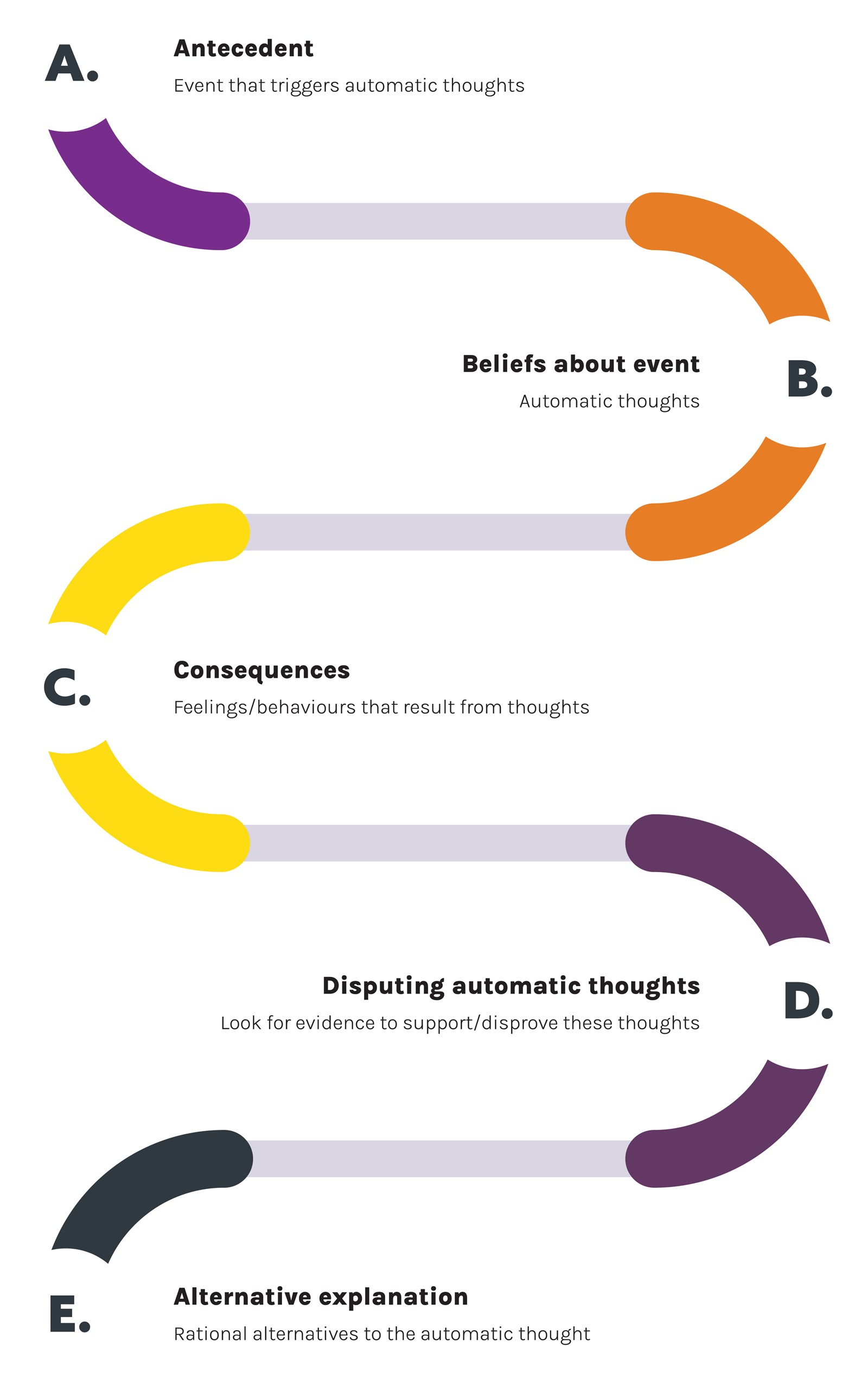Cognitive restructuring is a useful method for controlling symptoms of depression (and anxiety) and is based on the premise that what causes these feelings is not the situation itself but, rather, the interpretation of the situation [1980]. The idea is that our behaviours and feelings are the result of automatic thoughts which are related to our core (deeply held) beliefs. Therefore, feelings and behaviours of anxiety, depression, relapse etc. are the result of negative thoughts and beliefs that can be modified. A simple process of recognition and modification of these thoughts and beliefs can be conducted with clients using the A–E model depicted below.
In this model there is an initial event (the antecedent) which leads to automatic thoughts (beliefs about the event). These thoughts have resulting feelings and behaviours (consequences). Because these thoughts are automatic and often negative, they are rarely based on any real-world evidence – it is therefore necessary to look for evidence either supporting or disproving evidence (dispute automatic thoughts). Finally, developing rational alternative explanations to automatic thoughts can result in a new interpretation of the antecedent (alternative explanation). This process allows the client to stop and evaluate the thought process and realise how they come to feel that way. A client worksheet is included in the Worksheets section of these Guidelines to walk clients through the thought recognition and modification process.

Some common negative automatic thoughts and beliefs which can be challenged by using cognitive restructuring exercises include:
All or none (black and white or dichotomous) thinking
‘If I fail partly, it means I am a total failure.’
Mental filter
Interpreting events based on what has happened in the past.
‘I can’t trust men, they only let you down.’
Overgeneralisation
Expecting that just because something has failed once that it always will.
‘I tried to give up once before and relapsed. I will never be able to give up.’
Catastrophising
Exaggerating the impact of events – imagining the worst-case scenario.
‘I had an argument with my friend, now they hate me and are never going to want to see me again.’
Mistaking feelings for facts
People are often confused between feelings and facts.
‘I feel no good, so therefore I am no good.’
Should statements
Thinking in terms of ‘shoulds’, ‘oughts’ and ‘musts’. This kind of thinking can result in feelings of guilt, shame, and failure.
‘I must always be on time.’
Personalising
People frequently blame themselves for any unpleasant event and take too much responsibility for the feelings and behaviours of others.
‘It’s all my fault that my boyfriend is angry, I must have done something wrong.’
Discounting positive experiences
People often discount positive things that happen.
‘I stayed clean because I didn’t run into any of my using mates.’
(Adapted from Leahy [1981], Josefowitz and Myran [1982] and Kuru et al. [1983]).
Client information sheets on common negative thoughts and cognitive restructuring are included in the Worksheets section of these Guidelines.